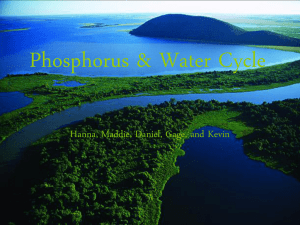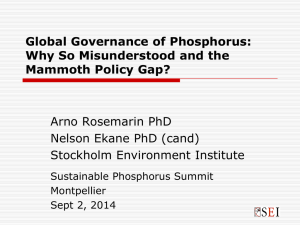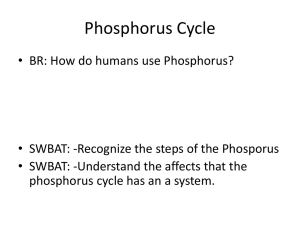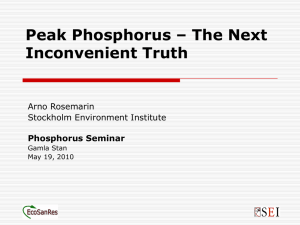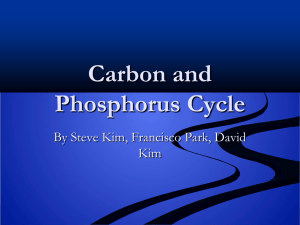Abstract for poster presentation DMF
advertisement
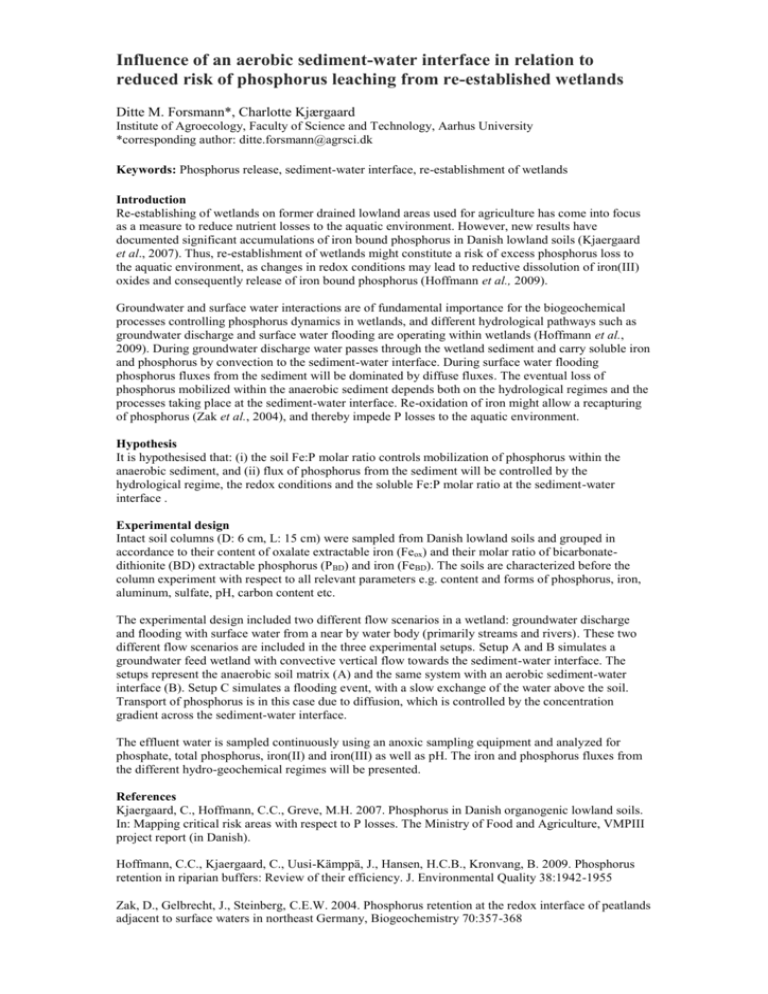
Influence of an aerobic sediment-water interface in relation to reduced risk of phosphorus leaching from re-established wetlands Ditte M. Forsmann*, Charlotte Kjærgaard Institute of Agroecology, Faculty of Science and Technology, Aarhus University *corresponding author: ditte.forsmann@agrsci.dk Keywords: Phosphorus release, sediment-water interface, re-establishment of wetlands Introduction Re-establishing of wetlands on former drained lowland areas used for agriculture has come into focus as a measure to reduce nutrient losses to the aquatic environment. However, new results have documented significant accumulations of iron bound phosphorus in Danish lowland soils (Kjaergaard et al., 2007). Thus, re-establishment of wetlands might constitute a risk of excess phosphorus loss to the aquatic environment, as changes in redox conditions may lead to reductive dissolution of iron(III) oxides and consequently release of iron bound phosphorus (Hoffmann et al., 2009). Groundwater and surface water interactions are of fundamental importance for the biogeochemical processes controlling phosphorus dynamics in wetlands, and different hydrological pathways such as groundwater discharge and surface water flooding are operating within wetlands (Hoffmann et al., 2009). During groundwater discharge water passes through the wetland sediment and carry soluble iron and phosphorus by convection to the sediment-water interface. During surface water flooding phosphorus fluxes from the sediment will be dominated by diffuse fluxes. The eventual loss of phosphorus mobilized within the anaerobic sediment depends both on the hydrological regimes and the processes taking place at the sediment-water interface. Re-oxidation of iron might allow a recapturing of phosphorus (Zak et al., 2004), and thereby impede P losses to the aquatic environment. Hypothesis It is hypothesised that: (i) the soil Fe:P molar ratio controls mobilization of phosphorus within the anaerobic sediment, and (ii) flux of phosphorus from the sediment will be controlled by the hydrological regime, the redox conditions and the soluble Fe:P molar ratio at the sediment-water interface . Experimental design Intact soil columns (D: 6 cm, L: 15 cm) were sampled from Danish lowland soils and grouped in accordance to their content of oxalate extractable iron (Feox) and their molar ratio of bicarbonatedithionite (BD) extractable phosphorus (P BD) and iron (FeBD). The soils are characterized before the column experiment with respect to all relevant parameters e.g. content and forms of phosphorus, iron, aluminum, sulfate, pH, carbon content etc. The experimental design included two different flow scenarios in a wetland: groundwater discharge and flooding with surface water from a near by water body (primarily streams and rivers). These two different flow scenarios are included in the three experimental setups. Setup A and B simulates a groundwater feed wetland with convective vertical flow towards the sediment-water interface. The setups represent the anaerobic soil matrix (A) and the same system with an aerobic sediment-water interface (B). Setup C simulates a flooding event, with a slow exchange of the water above the soil. Transport of phosphorus is in this case due to diffusion, which is controlled by the concentration gradient across the sediment-water interface. The effluent water is sampled continuously using an anoxic sampling equipment and analyzed for phosphate, total phosphorus, iron(II) and iron(III) as well as pH. The iron and phosphorus fluxes from the different hydro-geochemical regimes will be presented. References Kjaergaard, C., Hoffmann, C.C., Greve, M.H. 2007. Phosphorus in Danish organogenic lowland soils. In: Mapping critical risk areas with respect to P losses. The Ministry of Food and Agriculture, VMPIII project report (in Danish). Hoffmann, C.C., Kjaergaard, C., Uusi-Kämppä, J., Hansen, H.C.B., Kronvang, B. 2009. Phosphorus retention in riparian buffers: Review of their efficiency. J. Environmental Quality 38:1942-1955 Zak, D., Gelbrecht, J., Steinberg, C.E.W. 2004. Phosphorus retention at the redox interface of peatlands adjacent to surface waters in northeast Germany, Biogeochemistry 70:357-368

